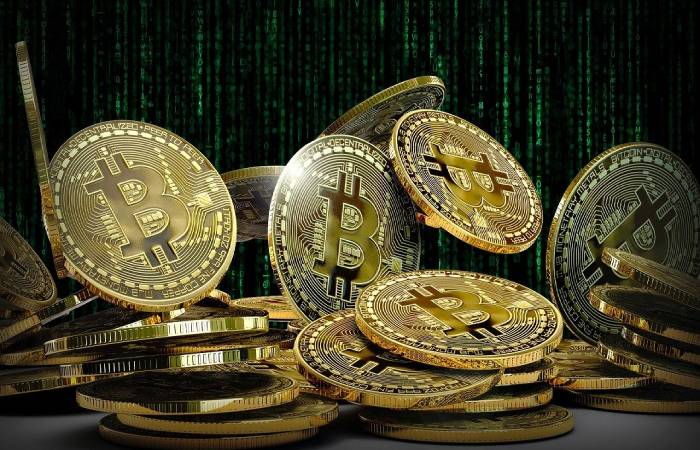Bitcoin price history has changed recently. Institutional investors are coming in as cryptocurrency markets mature, and regulators are setting rules just for them. Although bitcoin’s price is still volatile, it has become more of a part of the mainstream economy than speculators looking for quick profits.
Table of Contents
Here is A Brief Summary of Bitcoin’s Past
2009-2015
Bitcoin had a zero price when it was launched in 2009. On July 17, 2010, its price rose to $0.09.1. The cost of Bitcoin rose again on April 13, 2011, rising from $1 to a high of $29.60 on June 7, 2011, a gain of 2,960% in three months.3 This was followed by a sharp decline in cryptocurrency markets, just like the price of Bitcoin. Reached a low of $2.05 in mid-November4. The following year, the price rose from $4.85 on May 9 to $13.50 on August 15.
2016-2020
Prices slowly rose throughout 2016, reaching over $900 by the end of the year.9 In 2017, the cost of Bitcoin hovered around $1,000 until it broke above 2,000 dollars in mid-May, then to 19,345.49 on December 15. Economists and scientists noticed the dollar rose, and other companies started developing cryptocurrencies to compete with Bitcoin.
2021-Present
It took Bitcoin less than a month to break its 2020 price record in 2021, surpassing $40,000 on January 7, 2021. Then, in mid-April, bitcoin prices hit new all-time highs above $60,000 when Coinbase, a cryptocurrency exchange, went public. 13 Institutional interest continued to push the price higher, with Bitcoin peaking above $63,000 on April 12, 2021.
What Factors Affect the Current Bitcoin Price?
Like other currencies, products, or services in a country or economy, bitcoin and other cryptocurrencies depend on perceived value and supply and demand. If people think Bitcoin is worth a certain amount, they will pay for it, especially if they feel it increases.
By design, only 21 million bitcoins will be there. So the closer bitcoin gets to its cap, the higher its price will be as long as demand remains the same or increases.
Bitcoins are at a specific rate by mining software and hardware. However, this rate is halved every four years, slowing the number of coins created.19 According to the laws of supply and demand, the price of Bitcoin should continue to rise because its store may not be able to meet its order, and its popularity is increasing gaining. However, if popularity and demand drop, there will be more supply than demand, and the price of Bitcoin is expect to drop unless it holds its value for other reasons.
How Long does it Take to Mine Bitcoin?

The level of difficulty changes. Mining depends on the software and hardware used and the energy resources available, but the average time to find a block is around ten minutes.
Where does Bitcoin Come From?
Bitcoin was created by an anonymous person or group using Satoshi Nakamoto’s name in 2009. A Bitcoin is mine by specialized software and hardware and is create when an increasingly tricky mathematical problem is solve.
What Was Bitcoin’s Cheapest Price?
When Bitcoin began trading at $.09 in July 2010.1
Spending on cryptocurrencies and other Initial Coin Offerings (“ICOs”) is highly risky and speculative. This article remains not a recommendation by Investopedia or the writer to invest in cryptocurrencies or other ICOs. Since each individual’s situation is unique, a qualified professional should always be consulte before making any financial decisions. Investopedia types no representations or warranties regarding the information’s accuracy or timeliness. As of the date, this article was written, the author owns/does not own cryptocurrency.
Why is Bitcoin Important?
There are a few possible explanations for why many people think bitcoin is essential now.
It’s a “safe” thing
- In the face of global uncertainty, purchasing bitcoins remains a method for people to diversify their wealth. Its market value can be compare to another benchmark asset that shines in troubled times: gold.
- Amid the turmoil of a global epidemic, an unconventional US high-level inauguration, and geopolitical power shifts worldwide, more and more people may see gold and bitcoin as better alternatives to the dollar.
- It is associated with privacy-focus ideologies.
- Bitcoin (and cryptocurrency in general) remains not politically and ideologically unbiased. It was born out of the internet age that was plague by severe privacy issues.
- Bitcoin’s intellectual and ideological origins lie in the “cypherpunk” movement of the 1990s and early 2000s.
- Records from online forums show that it was an anonymous digital currency that allowed people to interact online without being tracked by governments or corporations and offer an alternative for those distrustful of the federal central banking system.
Why is Bitcoin Booming?
Bitcoin’s recent boom in value is driven by three factors: ideology, social sentiment, and hope.
But while these are variable factors, it doesn’t discredit the importance of the digital economy, interest in the technology as it matures, and the influence of institutional investors in cryptocurrencies, including Bitcoin.
Imagine New Futures
On a larger scale, decentralized cryptocurrencies enable new forms of coordination without the need for a central arbiter.
And blockchain-based decentralized networks not only enable digital money. Like regular smartphone apps, software developers worldwide are creating decentralized applications (DApps) based on Bitcoin and other blockchain protocols.
Conclusion
Bitcoin remains a digital currency, also called cryptocurrency, to trade goods or services with vendors that accept Bitcoin as payment. With Bitcoin, holders can buy, sell and exchange things or services without a central authority or bank.
